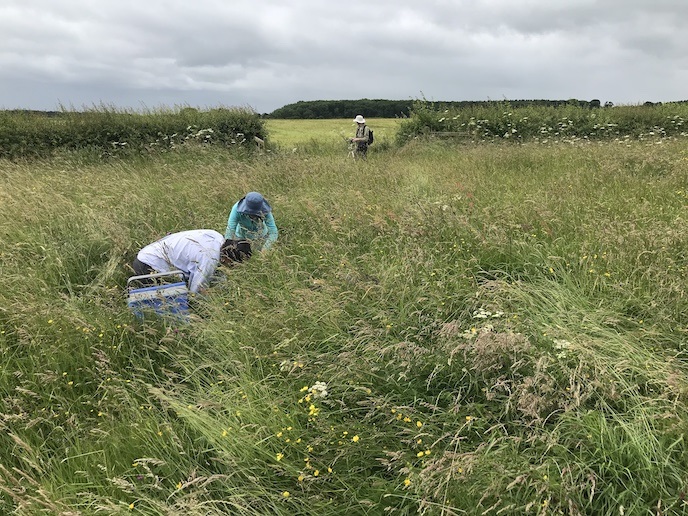How medieval England fed its growing population
We know that between the 8th and 13th centuries, England’s population grew to unprecedented levels. What we don’t know is how medieval farmers managed to grow enough cereals to feed this rapidly growing population. “Was this agricultural revolution the result of gradual developments – a ‘long’ revolution – or was it the outcome of a sudden technological transformation?” asks Helena Hamerow, professor of Early Medieval Archaeology at the University of Oxford. This is a question that has long been debated by archaeologists and historians – and one that the FeedSax project set out to answer. The project received funding from the European Research Council.
New scientific tools for advancing an old debate
To advance the debate, the project turned to scientific data, namely the use of functional weed ecology, pollen analysis, zooarchaeology (the study of animal bones) and crop stable isotope analysis. While this last approach had been successfully used to analyse cereal grains from the dry regions of the Mediterranean and Near East, things got a little more complicated when applied to samples from northern Europe. According to Hamerow, who served as the project’s principal investigator, the preservation of cereal grains in these wetter, heavier soils proved to be poor, meaning that as much as half of the project’s samples could not be analysed. “We dubbed some of these grains ‘Easter eggs’ as they were beautifully preserved on the outside but hollow on the inside,” she remarks. To overcome this problem, researchers decided to normalise the results across all case study sites, which allowed them to draw the information they needed to reach important conclusions.
A long agricultural revolution
One of those conclusions was that there was no ‘revolutionary moment’ when all the key innovations in medieval cereal farming came together as a single, game-changing solution. “Our research showed that innovations such as crop rotation, the mouldboard plough and the use of low-input, extensive farming had all been around since at least the 8th century, although their use didn’t become widespread for several centuries,” explains Hamerow. Because these innovations were already in use by the time of the Norman Conquest in 1066, researchers concluded that England’s cereal farming boom began too early to have been the initiative of Norman landlords. Instead, it is more likely that the mouldboard plough and systematic rotation were first introduced on farms associated with high-status sites such as royal monasteries and that they became widespread during the 10th and 11th centuries as they were adopted by local lords and prosperous peasants.
Declining soil fertility and questions of sustainability
Researchers also uncovered a steady decline in soil fertility during this era, which raises questions about the long-term sustainability of low-input, high-disturbance farming regimes. “This finding raises questions about whether the decline in soil fertility was a contributing factor in the Great Famine of the early 14th century,” notes Hamerow. “It also has relevance today, as scientists are coming to recognise that large-scale, high-disturbance cultivation is causing serious soil degradation.” To learn more, Hamerow is working with German colleagues to start a new project that will look at the Great Famine from an agroecological perspective using experimental archaeology to provide baseline data.
Keywords
FeedSax, agricultural, medieval England, archaeologists, archaeology, medieval farmers, food, crop rotation, mouldboard plough, farming, soil fertility, Great Famine, soil degradation

